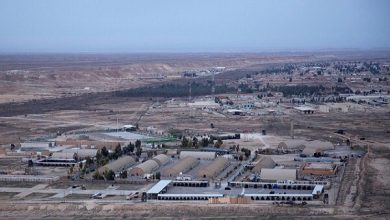Satellite Data Unveils Iran’s Devastating Strikes on Israeli Military Installations
According to a report by the Telegraph, experts at Oregon State University have examined satellite imagery indicating that Iranian missiles targeted five Israeli military installations during the recent conflict that spanned 12 days last month.

A British newspaper reported that six Iranian missiles struck targets situated in the northern, central, and southern areas of the Israeli-occupied territories, impacting sites such as an intelligence-gathering center and a logistics base.
Recent analyses utilizing radar satellite data have confirmed blast damage that aligns with characteristics typically associated with missile strikes.
The Israeli military operations, which had not been made public due to stringent censorship regulations, remain officially unacknowledged by Israeli authorities. When approached by the Telegraph for comments, the Israeli military chose not to provide any statements, according to the newspaper’s report.
Israeli military censorship laws impose restrictions on the dissemination of sensitive security information, especially during times of active conflict.
During the conflict, Israeli authorities, alongside the United States, reported that around 84% of Iranian missiles were successfully intercepted by their joint air defense systems.
In its analysis, the Telegraph reports that in the initial eight days of the conflict, a significant number of Iranian missiles successfully breached the highly-regarded air defense systems.
Analysts propose that this development could be attributed to several factors, including a restricted availability of interceptor missiles, advancements in Iranian technology, or alterations in attack strategy.
Iran executed a strategic assault utilizing a combination of drone and missile strikes to bypass Israel’s air defense capabilities. The deployment of suicide drones, despite being intercepted, played a significant role in disrupting defense systems, thereby enabling a greater number of missiles to breach these defenses.
A senior Iranian official, speaking on the condition of anonymity to the Telegraph, revealed that the coordinated deployment of suicide drones alongside missiles represents a calculated strategy intended to overpower Israeli defensive systems.
An official stated that the primary objective of deploying drones is to engage and occupy the adversary’s systems. While many drones are intercepted before reaching their targets, they still succeed in creating disorder.
On June 13, Israeli forces carried out an aggressive operation against Iran, resulting in the assassination of several high-ranking officials, nuclear scientists, and civilians.
In swift retaliation, Iran launched a barrage of missiles and drones within 24 hours, subsequently initiating a sequence of counter-operations dubbed True Promise III.
The United States became involved in the conflict supporting Israel on June 22, when American bombers targeted three Iranian nuclear facilities, an action that constituted a clear breach of international law.
In a retaliatory action, Iran executed a missile attack targeting Al Udeid Air Base located in Qatar. This base is recognized as the largest U.S. military installation in West Asia. Tehran framed this move as an act of self-defense.
Israel was compelled to independently accept a ceasefire agreement on June 24.







